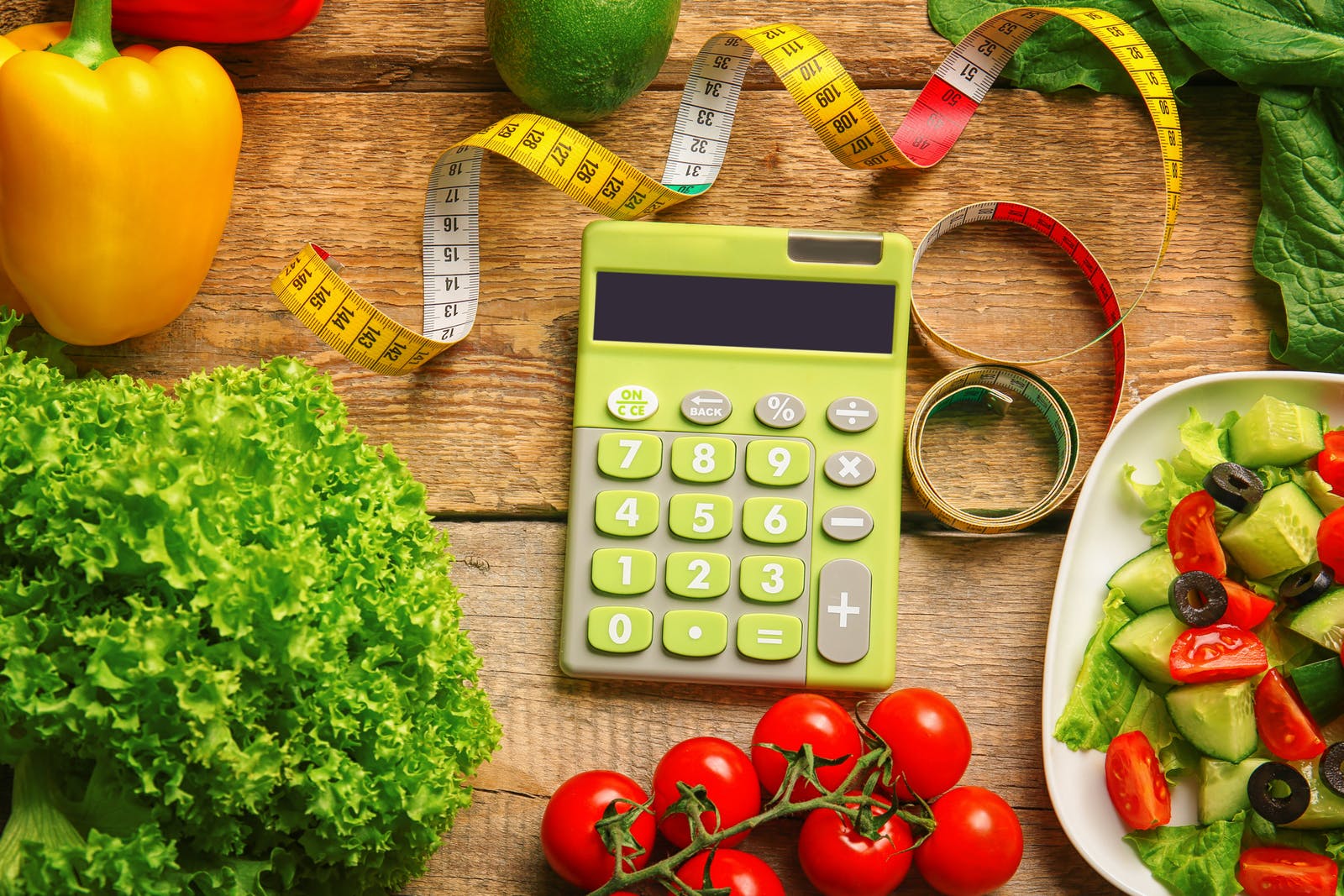Intermittent fasting is one of the most popular fitness trends in society today. Many people are incorporating intermittent fasting into their diets, while others are making it a regular part of their daily, weekly, and monthly eating habits.
HOW I GOT STARTED WITH INTERMITTENT FASTING
Recently, my church decided to do a 21 day fast. We followed the guidelines of The Daniel Fast. The Daniel Fast consists of eliminating meat, dairy, and sugar from your diet for 3 weeks. While the purpose of the fast is to get closer to God, it had the added benefit of helping me to lose weight. I was pleasantly surprised to see that I had lost weight, so I decided to incorporate some of the habits I learned during the fast into my regular diet. I did some research on simple ways to make those habits part of my normal routine.
My research led me to learn more about intermittent fasting. Fasting is the voluntary abstinence from food for spiritual reasons, weight loss purposes or health reasons. Intermittent fasting is a method of fasting that involves a period of fasting followed by a period of non-fasting. The length of time you designate for non-fasting will vary depending on the method of intermittent fasting you choose. Intermittent fasting is one of the easiest ways to lose weight without extensive exercise and incessantly counting calories.

Fasting is not a new concept, it has been around for hundreds of years. The ancient Greek physician, Hippocrates, often prescribed fasting to patients with various illnesses because he knew the natural healing benefits of fasting. Fasting is still a popular method of healing our body of illnesses and impurities. Kourtney Kardashian, for example, has been known to use the 16:8 fasting method and the eat-stop-eat methods to remove impurities from her body.
Many animals will fast after being injured or wounded. They won’t eat until after their injuries have healed. We as humans also have little to no desire to eat when we’re sick because our body has an instinct to fast when we feel ill. When we fast our body cleanses, restores and heals itself!
Fasting is safe for most people but talk to your doctor before starting the fast if you take medication or have certain medical conditions, such as diabetes, low blood pressure, have a history of eating disorders or if you’re worried about how fasting may affect you. Your doctor can advise you on the best way to fast and put your fears to rest.
BENEFITS OF INTERMITTENT FASTING
Intermittent fasting comes with a long list of benefits to your appearance, your physical, mental, and spiritual health.
- Appearance: Intermittent fasting is a very effective way to lose weight. Intermittent fasting causes us to consume fewer calories which leads to weight loss. It not only helps with overall weight loss but also helps to get rid of belly fat.
- Physical Health: Fasting not only cleanses and heals the body naturally. It also increases your metabolic rate, which speeds up weight loss by helping to burn more calories. According to one Healthline Article, “when you fast, the levels of the human growth hormone (HGH), skyrocket, increasing as much as 5-fold. This has benefits for fat loss and muscle gain. When fasted, your cells initiate cellular repair processes. This includes autophagy, where cells digest and remove old and dysfunctional proteins that build up inside cells. There are also changes in the function of genes related to longevity and protection against disease.”
- Mental Health: Fasting also helps heal the brain. Fasting has positive anti-aging effects on the brain and improves general brain functions.
- Spiritual Health: Fasting builds self-discipline. Prayer filled fasting also strengthens your relationship with God.
The bottom line is that learning how to fast properly allows us to lose weight faster and heal ourselves naturally, which can help us to live longer.
WHY FASTING CAUSES WEIGHT LOSS
When we eat, we increase the amount of insulin in our body. Insulin, the hormone that regulates the level of glucose in our blood, breaks down carbohydrates into glucose and stores it in our liver. But our liver has limited storage space to store glucose. Once the liver’s limit for glucose storage is reached, all excess glucose is turned into new fat. The excess glucose is transported to other areas of fat in our bodies. Although our liver has limited space to store fat, the rest of our body has unlimited storage space for new fat. Which is why we gain weight. Hello, muffin top, thick thighs, and junk in the trunk.
However, this process is reversed when we practice intermittent fasting. When we don’t eat, our insulin level decreases, which causes our body to burn off stored energy and reduces our body fat.
Simply put, when we eat, food gives us more energy than our body can immediately use. Our body stores the excess energy. That stored energy is what makes up our body fat. Intermittent fasting forces our bodies to use that stored energy and burn body fat, which is why fasting causes us to lose weight. Goodbye muffin top, thick thighs, and junk in the trunk!
INTERMITTENT FASTING METHODS
The most popular methods of intermittent fasting for weight loss are the 16:8 method, the 5:2 method, and the eat-stop-eat method.
The 16:8 method is a method of fasting that includes restricting your daily eating period to 8 hours and fasting for the remaining 16 hours of the day. With the 5:2 method, you eat only 500–600 calories on two non-consecutive days of the week and eat normally on the other 5 days of the week. With the eat-stop-eat method, you fast for 24 hours, once or twice a week and eat normally on the other 5 or 6 days. People who are trying out fasting for the first time often say the 16:8 method is the easiest to maintain over time and rave about its awesome health benefits.
Hugh Jackman uses Intermittent fasting for weight loss. He uses the 16:8 method of fasting to prepare his body for the role of Wolverine. He says he eats from 10 am to 6 pm, then fasts for the remaining 16 hours. He told the host of 60 Minutes that Dewayne “The Rock” Johnson recommended the 16:8 diet to him. That’s an endorsement that’s pretty hard to ignore.
MENTAL PREPARATION FOR INTERMITTENT FASTING
Before starting your fast, it’s important to get mentally and physically prepared for fasting. Being prepared mentally can help you get the best physical results. I started to prepare for the Daniel fast a few weeks in advance. I used what I learned in those weeks as kind of a test fast, so I would know what to expect when the real fast started.
My preparation time helped me to learn more about important aspects of the fast. For example, I got the opportunity to see exactly how I would feel during the fast, I learned which foods to avoid during the fast and which foods were acceptable. It also gave me time to find recipes for the fast.
PHYSICAL PREPARATION FOR INTERMITTENT FASTING
-
- Decide the rules and steps of your fast. This is one of the reasons intermittent fasting works so well, you get to make the rules because you know what will work best for you. To complete this step, all you really need to do is decide on the following options and you will have created your own fasting “rule book”.
-
- Set your fasting goals. (I will lose 6 lbs in 14 days, I will learn to eat a healthier diet, etc.)
- Decide which method of fasting you want to complete.
-
- Decide how long you’re going to fast. (3 days, 10 days, 14 days, etc.)
-
- Decide which days you will fast or which hours you will fast each day.
- Decide which foods, if any, you will avoid or cut down on during non-fasting days/hours.
-
- Write your goals down and read them aloud every morning and every night before bed. This helps to keep your goals in mind, which increases your resolve to eat healthily and fast as planned. When you spend time preparing properly, whatever you’re trying to accomplish becomes much easier. Fasting is no different.
- To make things even easier, you can also download and use our free fill-in-the-blank fasting planner. Fill in your method of fasting, fasting goals, fasting rules, recipes, and more.
FREE Template: Fill-in-the Blank Fasting Planner
Another piece of advice I seemed to see everywhere during my fasting research was to be clear about why I wanted to fast. This was very good advice. Fasting provides a lot of benefits, so different people will fast for different reasons. Getting extremely clear about why you’re fasting can help you stay committed to fasting even if it gets hard.
Are you fasting for weight loss or for another reason? Once you know your reason for fasting, write it down and read it when you’re tempted to quit. My why list helped me to continue fasting even when I wanted to give up and have a nice juicy hamburger.
SO IT’S TIME TO START FASTING, WHAT DO I DO FIRST?
First, get mentally and physically prepared. Make sure you have the proper point of view for fasting and are prepared for anything that might knock you off course.  Plan what you will eat, which hours you will eat, and which hours you will fast. Also, make a plan for how you will handle hunger and cravings during your fasting window. What will you do when hunger and cravings hit? Will you read, go for a walk, exercise, pray? Will you call a friend or an accountability partner? Decide before the fast begins so you will be ready to stay committed to the fast.
Plan what you will eat, which hours you will eat, and which hours you will fast. Also, make a plan for how you will handle hunger and cravings during your fasting window. What will you do when hunger and cravings hit? Will you read, go for a walk, exercise, pray? Will you call a friend or an accountability partner? Decide before the fast begins so you will be ready to stay committed to the fast.
Make sure you are clear on why you decided to fast. Write down goals you want to accomplish with this fast, and why you have to complete this fast. You could make a note in the memo app on your phone, take a screenshot of it and make that your screensaver image. That way you will have your goals handy when you need to remember why you are doing what you’re doing, and why you can’t give in.
Finally, here are some helpful tips to remember during your fasting:
- Drink plenty of water on both fasting and non-fasting days. According to Chef Chad, the plant-based chef, water is king when you’re fasting!
- Keep your preferred type and brand of water handy. Most people I know don’t drink tap water and most people have a preferred brand and type of water. Ozarka natural spring water is my favorite, while others may prefer distilled water or purified water. Having your favorite water close at hand at all times will ensure you drink plenty of water. It also helps you to avoid drinking beverages that will work against your weight loss efforts.
- Drink water before eating on non-fasting days. This will help you to eat a lot less during the course of your fast.
- Eat low carb meals or low-calorie meals in-between fasting periods.
- Keep busy. Staying busy will help you cut down on boredom eating.
- Drink coffee or tea to help curb your appetite.
- Don’t binge during non-fasting periods.
- Plan your meals whenever possible. This helps to increase your discipline because you’re deciding what to eat before mealtime. This step helped me immensely. I was able to avoid eating any unplanned meals that would work against my mission to lose weight.
FASTING: DAY 1
Now you’re ready for day 1 of your fast. Here is how to get started with intermittent fasting. No matter which method you choose, the steps are pretty much the same.
Step 1: Each morning, wake up and drink at least eight oz of water within the first hour of your morning. Do this before eating or drinking anything else.
Step 2: Pray or meditate for strength to focus and follow your “rule book” for the day.
Step 3: Read the rules you created for your fast to help keep them fresh in your mind.
Step 4: Read over your goal list and your why list.
Step 5: Go about your day as you normally would and be sure to follow the “rule book” you created for your fast.
Very simple, I know. And while there are differences between the three methods of fasting, they all have the same outcome; weight loss. So the sooner you get started, the sooner you can start losing weight.
DAILY EXAMPLES OF INTERMITTENT FASTING
Now that we’ve covered the basics of intermittent fasting, I want to give you an idea of how to put them into practice. I’m going to share an example of 24 hours of Intermittent fasting.
I’ll use the 16:8 method in my first example. In this example, I have chosen to eat from 11 am to 7 pm, meaning my first meal will be at 11 am and my last meal will be at 7 pm daily. I have chosen to eat as healthy as possible during my non-fasting window. I won’t eat a lot of junk food or binge during those eight hours, but I won’t set super strict meal guidelines either. I will plan my meals most days, but when I can’t, I follow my rule book regarding which foods to avoid or cut down on to choose my meals for the day. I also rely on the strength I gain from my morning prayer and meditation time to help me stick to it.
Preparation: I follow the list of preparation items 3 to four days before my fast begins, and make sure I have enough of my preferred water handy for the whole day.
Morning Activities: I wake up on the first morning of my fast. First, I pray. Then I read my daily affirmations for success and happiness while drinking at least eight ounces of water. Then I get ready for work, drinking water every step of the way.
Daily Activities: I drink water until 11 am. If I get really hungry I drink one cup of coffee, with no milk or cream, sweetened with stevia, which is 0 calories. This way I’m not giving my body any carbohydrates to turn into new fat.
At 11 am I eat my first meal, which is technically brunch, I guess. Here is where you will follow your rule book guidelines for what to eat or not eat. And as long as you don’t eat a large amount of the worst food available every day, you can eat what you like during non-fasting hours.
I usually eat my next meal after work. If I need a snack before that, I eat some fruit. My favorite fruit is green seedless grapes and pineapples. Whenever I am hungry between mealtimes, I find healthy, filling snacks to eat. Finally, I eat my last meal between 6:30 pm and 7:00 pm. If I get hungry between 7:00 pm and bedtime, I drink water. Occasionally I will drink one last cup of coffee, with no milk or cream sweetened with stevia, if I get really hungry before bedtime.
In this next example, I’ll share an example of 24 hours of Intermittent fasting on the 5:2 method. The difference between this method of intermittent fasting and the 16:8 method is that the goal is to eat 500-600 calories on days when you are fasting, no more and no less.
There are meal plans available to make this much easier to accomplish. You can check out the recipes on my website for inspiration, or Google recipes that help you accomplish the goal of eating only 500 calories per day. Preparation and morning activities are the same.
Preparation: I follow the list of preparation items 3 to four days before my fast begins, and make sure I have enough of my preferred water handy for the whole day.
Morning Activities: I wake up on the first morning of my fast. First, I pray. Then I read my daily affirmations for success and happiness while drinking at least eight ounces of water. Then I get ready for work, drinking water every step of the way.
Non-fasting days Daily Activities: On days when I’m not fasting, I simply eat what I would normally eat. I try to eat as many fresh, whole foods as possible and I’m careful not to binge on non-fasting days. Otherwise, I eat normally.
Fasting Days Daily Activities: On days when I am fasting, I eat three meals a day. I look for meals that have roughly 167 calories each. Since my maximum calorie intake goal is 600, this leaves me 100 free calories in case I go over 167 on either meal. I space out the intervals when I eat to make sure I don’t go over my calorie goal. I’ve learned that eating meals too close together on fasting days makes it harder to stick to the goal. To make it easier to stay within the calorie range I use the calorie counter app on My Fitness Pal to check the calories of potential meals and use Google to look for recipes that have 167 – 200 calories or less.
Sample meals: Each of the following meals are delicious and filling. And while these might not be your ideal fast day meals, you can use Google to search for low-calorie recipes and find meals that you enjoy as much as I enjoy these. You can also use My Fitness Pal or similar apps to help find recipes.
Breakfast: Two scrambled eggs with 2 finely diced asparagus spears, sprinkled with 2 tablespoons of Velveeta sharp cheddar cheese and 2 slices of regular bacon. I spray a small amount of Pam vegetable cooking spray in my pan before adding the eggs and I season with a small amount of salt and black pepper. This breakfast only has 306 calories.
Lunch: Salad with 2 cups of romaine lettuce and 1 cucumber, peeled, sliced and soaked in vinegar. I use 2 tablespoons of Italian dressing to add some flavor, This simple salad only has 123 calories. Salads are a great option for fasting days because many salad ingredients are naturally low in fat, and it’s extremely easy to tailor salads to your taste buds.
Dinner: Lemon garlic chicken and steamed broccoli which has a total of 141 Calories and is delicious! Chicken is always awesome. It’s very filling and can be prepared a million different ways, literally.
All three meals have only 570 calories, which means I have 30 more calories available if I get hungry. Thirty calories are enough for a small snack, like some grapes, which I love. (Grapes are only 2 calories each)
Finally, I’ll give you an idea of how to use the eat-stop-eat method of fasting. According to the Women’s Health website, the eat-stop-eat method of fasting consists of “fasting for 24 hours, twice a week, then eating “responsibly” for the remaining five days, but not necessarily “dieting.” You can choose any two days you want to fast and there are no calorie or diet restrictions on the five days when you are not fasting. So the idea is to fast for a maximum of 24 hours on two non-consecutive days. Preparation and morning activities for the eat-stop-eat fasting method are very similar to the other two methods with a slight variation.
Preparation: I would follow the list of preparation items 3 to four days before the fast begins, and make sure I have enough of my preferred water handy for the whole day.
Morning Activities: When I wake up on the first morning of the fast, I would pray, then read my daily affirmations and drink my first eight ounces of water. Next, I would eat a very filling breakfast. For example, I might eat two pancakes, two sausage patties and a turkey and cheese omelet with milk, or coffee. If I eat before 8 am at the start of my 24-hour fast, I wouldn’t eat again until 8 am the next morning.
Fasting Days Daily Activities: On days when I am fasting, I would drink plenty of water and satisfy my taste buds with various other zero-calorie beverages. My go-to drinks are coffee and green tea sweetened with stevia, unsweetened essence water, zero-calorie sparkling water. There are plenty of other zero-calorie beverages to drink while fasting such as Sprite Zero, Coke Zero, Red Bull Total Zero, and Aquafina FlavorSplash, just to name a few.
Non-fasting days Daily Activities: On non-fasting days, I would choose sensible recipes that include as many fresh, whole foods as possible. I wouldn’t count calories, or stick to any specific diet; I’d eat normally.
So there you have it, folks, The Ultimate Guide to Intermittent Fasting for Weight Loss explained in full detail, with examples you can use to get started with your own routine. Be sure to get your free fasting workbook.



